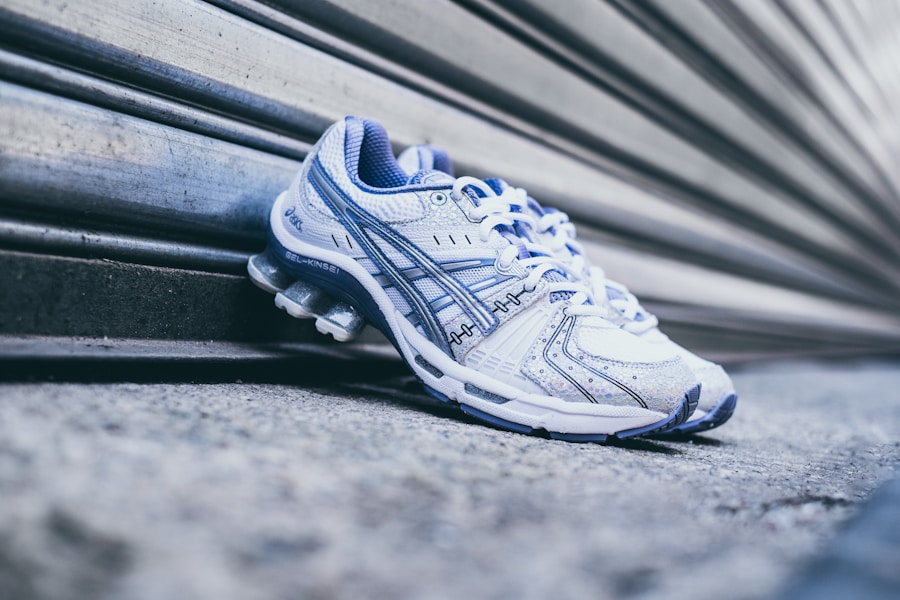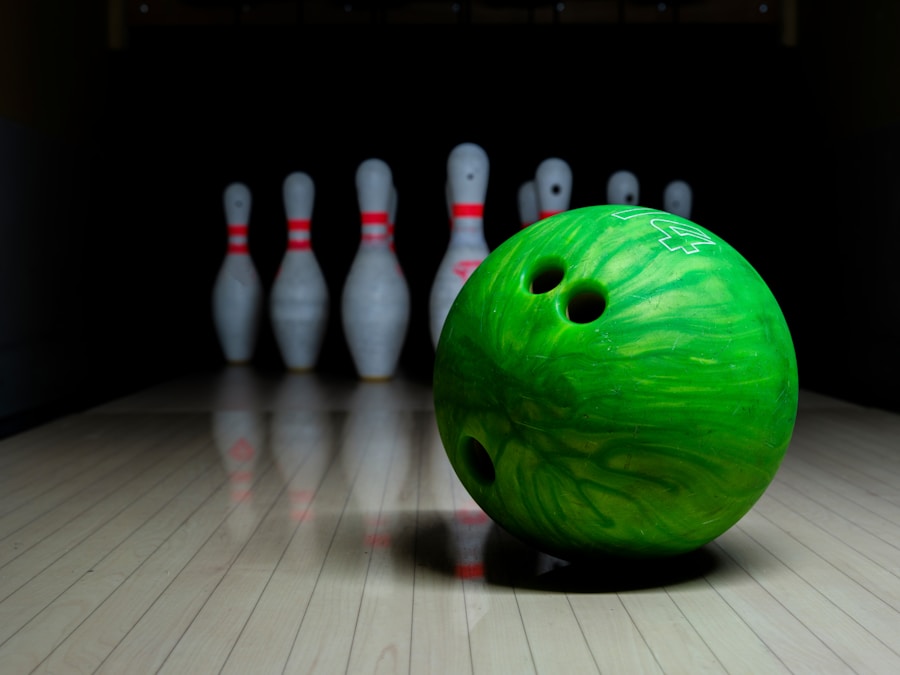Bowling is a popular recreational activity that requires the right equipment to ensure a successful and enjoyable experience. One of the most important pieces of equipment for any bowler is a good pair of bowling shoes. Proper bowling shoes are essential for maintaining balance, stability, and control while making your approach and release. They are specifically designed to provide the necessary support and traction needed for the unique movements and demands of the sport. Without the right shoes, bowlers may struggle to achieve consistent performance and may even risk injury due to slipping or sliding on the approach. Therefore, investing in a quality pair of bowling shoes is crucial for any serious bowler looking to improve their game and overall experience on the lanes.
In addition to performance, proper bowling shoes also help to maintain the condition of the bowling lanes. Most bowling alleys have specific rules and regulations regarding footwear, and wearing street shoes or other types of non-bowling shoes can damage the lanes and create safety hazards for both the bowler and other patrons. By wearing the appropriate bowling shoes, bowlers can help preserve the integrity of the lanes and contribute to a safer and more enjoyable environment for everyone. Overall, the importance of proper bowling shoes cannot be overstated, as they play a significant role in both performance and lane maintenance.
Understanding the Different Types of Bowling Shoes
When it comes to choosing the right bowling shoes, it's important to understand that there are different types available to suit various preferences and skill levels. The two main categories of bowling shoes are athletic-style and performance-style. Athletic-style bowling shoes are designed for casual or recreational bowlers who may not be as concerned with advanced features or customization. These shoes typically have a universal sole that is suitable for both left- and right-handed bowlers, making them a convenient option for occasional bowlers or those who bowl for fun with friends and family.
On the other hand, performance-style bowling shoes are geared towards more serious or competitive bowlers who require specific features to enhance their game. These shoes often come with interchangeable soles and heels, allowing bowlers to customize their slide and traction based on their individual preferences and playing style. Performance-style shoes also tend to have more advanced materials and construction for increased durability, support, and comfort during extended periods of play. Understanding the differences between athletic-style and performance-style bowling shoes is essential for making an informed decision based on your level of commitment and desired performance on the lanes.
Finding the Right Fit for Your Feet
Finding the right fit for your feet is crucial when it comes to selecting the perfect pair of bowling shoes. Proper fit ensures comfort, support, and stability, which are all essential for optimal performance and enjoyment while bowling. When trying on bowling shoes, it's important to consider factors such as length, width, arch support, and overall feel. The shoes should fit snugly without being too tight or causing discomfort, as this can lead to blisters, foot pain, or even injury during play.
It's also worth noting that bowling shoes are typically designed with a slightly different fit compared to regular street shoes. For example, they may have a wider toe box to accommodate the natural spreading of the feet during the approach and release. Additionally, some bowlers may prefer a tighter fit in the heel area to prevent slippage, while others may prioritize flexibility in the forefoot for a more natural feel during their slide. Ultimately, finding the right fit for your feet involves trying on different styles and sizes to determine which pair offers the best combination of comfort, support, and performance for your individual needs.
Exploring the Features and Benefits of Bowling Shoes
Bowling shoes come with a variety of features and benefits that cater to different playing styles and preferences. One of the most common features found in bowling shoes is the interchangeable sole and heel system. This allows bowlers to customize their slide and traction based on lane conditions, personal preference, and playing style. For example, a bowler who prefers a longer slide may opt for a smoother sole, while someone who prefers more control may choose a traction sole with a higher friction rating.
Another important feature of bowling shoes is the construction and materials used in their design. High-quality bowling shoes are often made with durable materials such as leather or synthetic uppers, cushioned insoles, and supportive midsoles for enhanced comfort and performance. Additionally, some bowling shoes may have added features such as padded collars, breathable linings, or reinforced toe caps for extra protection and longevity.
In terms of benefits, proper bowling shoes provide essential support and stability during the approach and release, helping bowlers maintain balance and control throughout their delivery. They also contribute to a consistent slide and traction on the approach, which is crucial for achieving accuracy and power in your shots. Overall, exploring the features and benefits of bowling shoes can help you make an informed decision based on your specific needs and playing style.
Considering Your Budget and Style Preferences
When shopping for bowling shoes, it's important to consider your budget and style preferences to find a pair that meets your needs without breaking the bank. The cost of bowling shoes can vary depending on factors such as brand, materials, construction, and additional features. While some bowlers may be willing to invest in higher-end performance-style shoes with advanced customization options, others may prefer more budget-friendly options that still offer adequate support and functionality.
In terms of style preferences, bowling shoes come in a range of designs, colors, and patterns to suit individual tastes. Some bowlers may prefer classic black or white styles for a timeless look, while others may opt for bold colors or patterns to express their personality on the lanes. Additionally, some brands offer gender-specific designs with features tailored to men's or women's feet for a more customized fit.
Ultimately, considering your budget and style preferences can help narrow down your options and guide you towards finding the perfect pair of bowling shoes that align with your financial constraints and personal tastes.
Tips for Maintaining and Caring for Your Bowling Shoes
Proper maintenance and care are essential for prolonging the life of your bowling shoes and ensuring they continue to perform at their best. One important tip for maintaining bowling shoes is to clean them regularly after each use to remove any dirt, debris, or moisture that may have accumulated during play. This can be done using a soft brush or cloth to gently wipe down the uppers and soles, as well as removing any excess moisture from the inside of the shoes.
Another tip is to store your bowling shoes in a cool, dry place away from direct sunlight or extreme temperatures to prevent damage to the materials or construction. It's also recommended to avoid wearing your bowling shoes outside of the bowling alley to minimize wear and tear on the soles and keep them in optimal condition for play.
In addition to regular cleaning and proper storage, it's important to inspect your bowling shoes periodically for any signs of wear or damage that may require repair or replacement. This includes checking for loose stitching, worn outsoles, or damaged laces that could affect the performance or longevity of your shoes.
By following these tips for maintaining and caring for your bowling shoes, you can ensure they remain in top condition for years to come, providing you with reliable support and performance on the lanes.
Where to Buy the Best Bowling Shoes
When it comes to purchasing the best bowling shoes for your needs, there are several options available both online and in-store. Many sporting goods retailers carry a selection of bowling shoes from popular brands such as Dexter, Brunswick, Storm, and more. Visiting a physical store allows you to try on different styles and sizes to find the perfect fit for your feet before making a purchase.
Alternatively, online retailers offer a wide range of bowling shoes with convenient shipping options for those who prefer shopping from the comfort of their own home. Many online stores also provide detailed product descriptions, customer reviews, and sizing guides to help you make an informed decision based on your specific preferences and requirements.
Another option is to purchase bowling shoes directly from bowling alleys or pro shops where knowledgeable staff can provide expert advice on selecting the right pair for your individual needs. Some pro shops may even offer custom fitting services or additional accessories such as shoe covers or replacement parts to enhance your overall experience on the lanes.
Ultimately, where you choose to buy your bowling shoes depends on factors such as convenience, availability, customer service, and pricing. By exploring different retailers and considering your specific needs, you can find the best place to buy high-quality bowling shoes that will elevate your game and provide long-lasting comfort and support while you bowl.
In conclusion, proper bowling shoes are essential for maintaining balance, stability, and control while making your approach and release on the lanes. Understanding the different types of bowling shoes available can help you make an informed decision based on your level of commitment and desired performance. Finding the right fit for your feet is crucial for comfort, support, and stability during play. Exploring the features and benefits of bowling shoes can guide you towards finding a pair that meets your specific needs and playing style. Considering your budget and style preferences can help narrow down your options when shopping for bowling shoes. Tips for maintaining and caring for your bowling shoes can help prolong their life and ensure they continue to perform at their best. Where you choose to buy the best bowling shoes depends on factors such as convenience, availability, customer service, and pricing. By considering these factors and exploring different retailers, you can find high-quality bowling shoes that will elevate your game and provide long-lasting comfort and support while you bowl.









